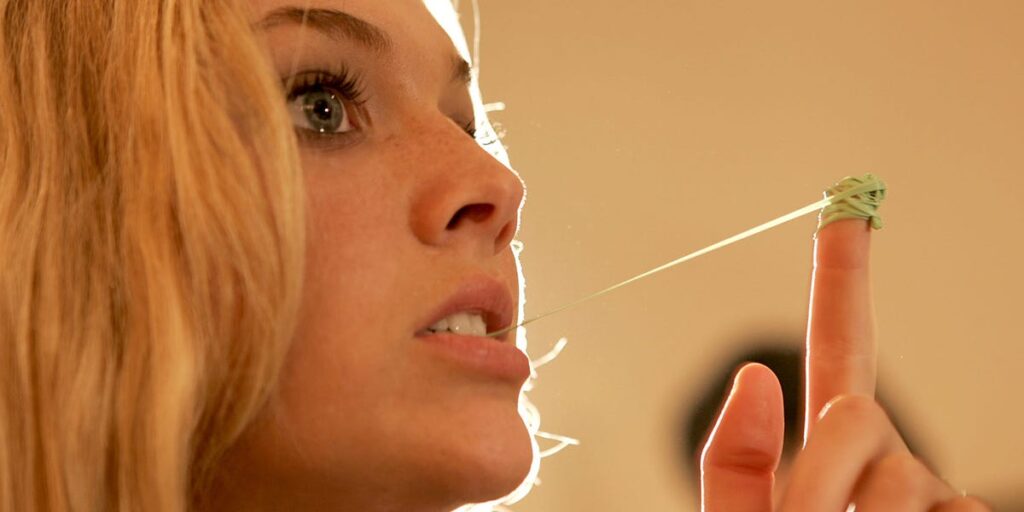Microplastics are flowing out of gum as you chew it, preliminary results of a new study suggest.
The burst of flavor in the first few minutes of chewing a stick of gum comes from the hundreds to thousands of microplastics the gum is releasing into your saliva, said the study’s lead author, Sanjay Mohanty.
Indeed, the base ingredient of chewing gum — the part that makes it chewy — is synthetic rubber. That’s plastic.
“That’s something very few consumers know,” Mohanty, an engineering professor at the University of California, Los Angeles, told Business Insider.
“You are eating a material that is made of plastic. At least 2% of that is plastic,” he said, referring to a piece of gum.
To be sure, microplastics are everywhere. Countless products shed them in your home. They’re in your dust, food, and drinking water. They’re in soil and oceans all over the world — from the Mariana Trench to the top of Mount Everest. They’ve been found in human blood, poop, hearts, testicles, placentas, and breast milk.
An especially offputting study recently found human brains potentially contained enough microplastics to make a spoon.
Mohanty said, “99% of things I see around me are plastic, so I should not be surprised to find plastic in everything, including my own body.”
Research has found correlations between microplastics and inflammation, infertility, lung and colon cancers, and risk of heart attacks and stroke. However, it’s unclear if microplastics caused or contributed to those conditions.
“My goal is just to inform what we could do differently,” Mohanty said.
Chewing less gum, it seems, is one thing we can do.
Mohanty presented these findings, which have not undergone peer review through a scientific journal, at the spring meeting of the American Chemical Society last week.
“Chewing gum was not something on my radar,” Britta Baechler, the director of ocean plastics research at the nonprofit Ocean Conservancy, who recently co-authored a study on microplastics in food, told BI.
“I think scientists are getting really creative with trying to get a more complete picture of our exposure to microplastics,” she added.
Natural gum released plastic, too
Mohanty and the graduate students in his lab chose five brands of synthetic gum and gave seven pieces of each brand to a single person, who chewed each piece for up to 20 minutes, rinsing with clean water in between pieces to clear out residual plastic.
Knowing the plastic base of gum, Mohanty wasn’t surprised when he measured hundreds to thousands of tiny plastic polymers swimming in the person’s saliva as they chewed each piece.
He was surprised, however, when they ran the same tests with five brands of natural gums, which are made from plant materials like chicle instead of a rubber base.
Natural gums resulted in about the same quantity of microplastics in the chewer’s saliva.
They even found the same plastic polymers in both types of gum: polyolefins, polyethylene terephthalates, polyacrylamide, and polystyrene. Those types of plastics are also used in food wraps, shopping bags, car parts, egg cartons, and packing peanuts.
Because of the measuring techniques they used, this experiment was only able to detect plastic particles 20 micrometers wide or larger. That’s about one-fifth the width of a human hair. It’s likely that gum also releases plastic of even smaller size — nanoplastics — Mohanty said.
Should you chew gum?
There’s good news — sort of.
The researchers found the most microplastics within the first two minutes of chewing gum. After eight minutes, 94% of the plastic particles they detected had already been released.
A simple way to cut back on plastic is to chew your gum for longer instead of popping a new piece, Lisa Lowe, a graduate student who ran this study with Mohanty, said in a press release.
In the grand scheme of your daily microplastic ingestion, a stick of gum probably isn’t much. You ingest billions more microplastics from a cup of tea made with a plastic-containing teabag (which is more common than you might think), a 2019 study found.
Still, a gum-chewing habit could add up. Based on their findings, the researchers calculated that someone who chews 160 to 180 small sticks of gum per year would ingest about 30,000 microplastic particles annually.
Mohanty said his wife stopped chewing gum altogether after hearing their results.
“Why eat chewing gum and directly ingest plastics? Chewing gum is non-essential,” Mohanty said.
If you do chew, Mohanty added, throw your gum in the garbage instead of leaving chewed-up plastic in the street.
Read the full article here
















